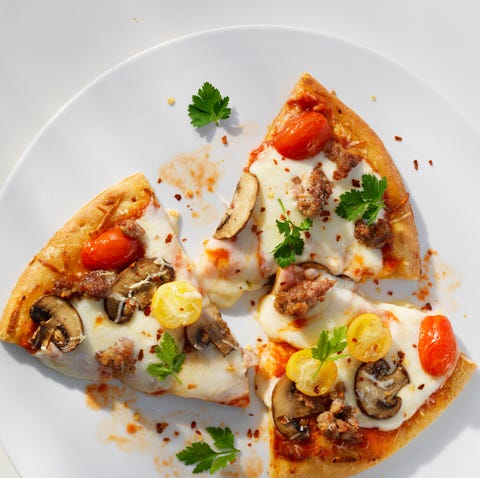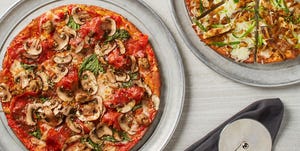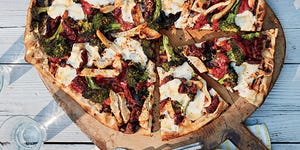Your Diet Of Pizza, Pizza, And More Pizza Might Not Be THAT Bad

Nothing quite hits the spot like pizza, amirite? That crispy-chewy crust, tangy sauce, and gooey cheese is the stuff dreams are made of. But that late-night slice or delivery pie doesn’t exactly seem…healthy.
Or is it? Could your cheesy pie be part of a healthy meal?! (Please say yes. Please say yes.)
Tell me the truth: Is pizza healthy?
“There’s no denying that pizza is generally high in sodium, calories, saturated fat, and refined carbohydrates,” says Ginger Hultin, R.D., spokesperson for the Academy of Nutrition and Dietetics. (Booo.) She says the biggest nutritional culprits are the processed cheese and meat toppings.



But the truth is, pizza is made up of the same components as any other meal—carbohydrates, protein, and fat, says Cara Harbstreet, R.D., creator of Street Smart Nutrition. “It provides the same things for you: energy, flavor, and satisfaction,” she says. “Plus, tomato sauce is rich in vitamins and antioxidants.”
But the type of pizza matters. For example, two slice of Pizza Hut Supreme pizza—topped with pepperoni, seasoned pork, beef, mushrooms, green bell peppers and red onions—packs:
Now, here’s the good news: Pizza can be healthy. “Pizza can be a wonderful vehicle for veggies of many varieties,” says Hultin. Making your own pizza at home can make a big difference. In fact, a healthy at-home pizza—like this recipe from Woman’s Day—can be a more nutritious choice. One serving (approx two slices) comes out to:
“There are a lot of ways to make pizza and some are lighter and more nutrient-rich than others,” says Melissa Joy Dobbins, R.D.N.
How can I make pizza healthier?
So many ways.
Start with the crust. “You can greatly reduce calories and sodium by having a thinner crust rather than a normal thick or stuffed crust,” says Hultin. Want a boost of fiber? Try a whole-grain crust instead. If you want to get creative, swap your regular crust for a portobello mushroom or cauliflower crust for extra veggies and nutrients.
Pick a healthy sauce. Traditional red sauce is rich in vitamin A, C, and lycopene, and it’s a better option compared to creamy sauces. If you’re not a tomato sauce fan, Harbstreet recommends trying pesto or an olive oil-based sauce for added healthy fats.
Be mindful of cheese. It’s really up to you, but Harbstreet advises using a normal amount of cheese, or a lighter hand. Cheese does provide calcium and protein, so it’s got some perks. Just don’t go overboard.
Choose smart toppings. Dobbins suggests sticking with veggies, which are high in fiber and various vitamins. Avoid meat toppings or opt for leaner, less processed options like chicken. (P.S. Hultin says current guidelines suggest limiting the intake of processed meats like bacon, sausage, and pepperoni, which are rich in sodium and saturated fat.)
Don’t forget portions. While what you put on your pizza matters, so does how much you eat. “Portion is one thing to consider, whether you’re eating a lighter pizza or enjoying a more decadent version,” says Hultin.
But at the end of the day, if you’re craving pizza, nothing will quite hit the spot like a nice cheesy slice. Hey, it’s all about moderation. Hultin says: “If you want pizza, eat pizza!”
Source: Read Full Article
